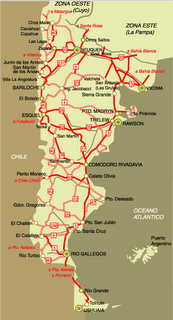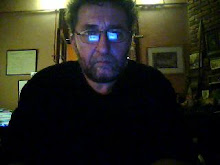
The oldest church in Buenos Aires
Topic: Religions Tours
The oldest church in Buenos Aires: Iglesia del Pilar
The oldest church of Buenos Aires is in the heart of upscale super chick
Recoleta neighborhood. This simple and small colonial construction featuring
clean rounded lines, all painted in white; with no apparent extravaganza is
THE traditional church of the city, the place of prayer and comfort for the
Argentine society group.
We recently told the history of the Recoletos religious order related to the
history of the Recoleta cemetery, the story of burials in this area begins
much earlier than the 19th century. Fascinating and interesting this story
is not commonly told due to the discrepancies throughout time in the way
people deal with death and the aftermath.
It should be put in time development perspective in order to bring into the
present the stories of life and death, power and connections.
At the beginning of the eighteenth century the Recoletos settled in the
area. It was in 1732 when Italian origin Architect, Giovanni Andrea Bianchi
conceived the Church very much alike the one we have today. However, with
the pass of time and the development of the nation and its elites, the main
society church began to suffer aesthetic alterations in an attempt to rise
the construction accordingly to the social standard it represented.
The mixture of styles and constant additions were ruining the original
concept; in 1939-1940 Andr? Mill? a prominent architect, was the man in
charge of restoring the church into its original features, conserving the
Pas-de-Calais tiles decorating the tower and the spherical clock on its
back. Today the visitor and the religious can admire its gorgeous inside
featuring in the main altar and the six lateral chapels the influx of the
late Baroque style. In spite of the strong European style echoes -religious,
architectonic and decorative- we can see rising from the silent details a
great deal of indigenous style marks such as the interesting Inca like sun
atop the front section of the altar -made in carefully handcrafted American
silver-, or the typically Inca style in the angel faces -featuring full red
cheeks- all this is a strong prove of the syncretism in the art input to the
temple's construction.
Along with the European styles, religions, ideas and ways of life came a
specific relationship with the dead and the aftermath. While the local
civilizations prior to the conquest had a circular world conception in which
the living and the dead were all part of a same line of life, and their dead
were mummified and placed in mountains to reencounter with the Pacha
Mama -mother land-; the Spaniards and their catholic religion presented a
dual life conception, the one in the earth as a preparation for the eternal
life in the kingdom of God; they buried their dead whose souls ascended to
heaven or descended to hell.
This catholic conception is tied to the Chatholic institution and church,
and the priest's role working on behalf of the deceased. The church burials
were the rule then, and there was a rich and interesting logic to its
functioning. The prominent men and women of society who were deep believers
and good Christians, according to their place in the social pyramid were
buried inside the church, close to the altar, these was done because it was
then believed that the soul could ascend the Heavenly kingdom easily. That's
why, under the Colonial churches there are numerous archeological sites and
even some underground museums. After the vigil, the burial ceremony took
place, the body was shrouded with an ancient tunic illustrating the order to
which belonged and buried underground the church, one of the tiles in the
floor was lifted, and then placed back into the original scheme. there were
no marks or signs that indicated the location. However the family, present
at the moment of burial, knew exactly where it was and usually, chose to sat
on the nearby benches during mass.
Iglesia del Pilar, Pilar Church Recolecta, Buenos Aires, Argentina.
Not everyone was buried in the church, as the obvious limitation of space
indicates; however, the most important factor was their place in society. It
was common that important yet not prominent society members were buried in
the limiting church lands. The rest of society usually was buried in common
holes, whereas the slaves were not even buried. The Protestants, at first,
being unworthy members of a strong catholic society, were only allowed to be
buried on the riverside benches. Then, in the 19th century with a prominent
British community living in Buenos Aires, special arrangements were made for
the Protestants to have their cemetery in the Chacarita district.
When the city began to grow in modern times' proportions, this burials
system was not suitable enough to provide service to a growing population;
the sanitarian system was soon to collapse. That was when the Recoleta
cemetery was open.
Interested in Religious Art? Press here to Religious Art:For there wasn¿t just a one way influence in this sort of art, especially if we take into consideration a very important fact, that being that the great majority of Colonial artists were local aborigines from the great convents of the area. Syncretism is the key word here. If looked at carefully, Colonial religious art might on the surface be similar to European baroque or renaissance, but from a closer approach there¿s a great number of details such as the local scene, animals, physical stereotype, etc, that emerge from the so called European imposed technique.
Interested in buying antiques and collectibles from Buenos Aires or for that matter any other item that I have mentioned in any article you have found on this my web site, you can buy Toys from my museum and threw eBay, threw the Toy Museum on eBay press here; Toy Museum on eBay and threw The Buenos Aires ArtDealer, press here; Art Dealer on eBay From Art to Antiques. Or contact me direct. For more information :Email Bob Frassinetti. Press here to go to The Buenos Aires Art Dealer is a webzine magazine on Art, Antiques & Collectibles made or found in Argentina. The Buenos Aires ArtDealer, Argentina.
So if you are interested in Art or Antiques, and you are thinking of travelling to Argentina please feel free to email us…….. Please feel free to contact Flor Rodriquez by emailing her: Email: Flor Rodriguez. or Bob Frassinetti: For more information: Email: Bob Frassinetti. Press here to see all topics on Art, Antiques and Travel Information for Buenos Aires & Argentina:Daily Updates on Art, Antiques, Collectibles as well as travel information for Buenos Aires, Argentina. Phone me thru Skype, ID: Bob Frassinetti or you can also chat with me thru Yahoo, press here:
Yahoo Contact
Find me on MySpace and be my friend!
Read The Buenos Aires Art Dealer a e-zine magazine on Art, Antiques & Collectibles from Argentina. The Buenos Aires ArtDealer, Argentina.




No comments:
Post a Comment